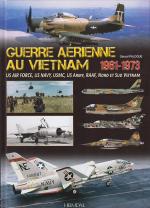Built over 12,000 units in six major versions, used by some air forces until the 1970s, but most notably Pacific War aircraft and a true star of the small screen, the Chance Vought F4U Corsair is undoubtedly one of the most most famous aircraft in the history of aviation.
Immediately recognizable by its "gull-wing" sails, a configuration imposed by its very large diameter propeller, the Corsair, after a difficult start, was one of the architects of the success of American naval aviation during the Second World War, including winning the nickname of "wheezing death" because of the noise generated by its engine and its wings during attacks.
In the absence of an available and efficient successor, he resumed valiant service during the Korean War during which he carried out nearly 80% of ground attack missions. While the United States was the main user of the F4U, the British Fleet Air Arm used it in the Second World War, including in the European theater of operations, while France, for which a specific version was made by Vought, did not retire his last Corsairs until the early 1960s, after using them in action in Algeria and Suez.
On 224 pages, more than 150 unpublished profiles of this legendary aircraft that these two great specialists and illustrators of the world aviation have made.









